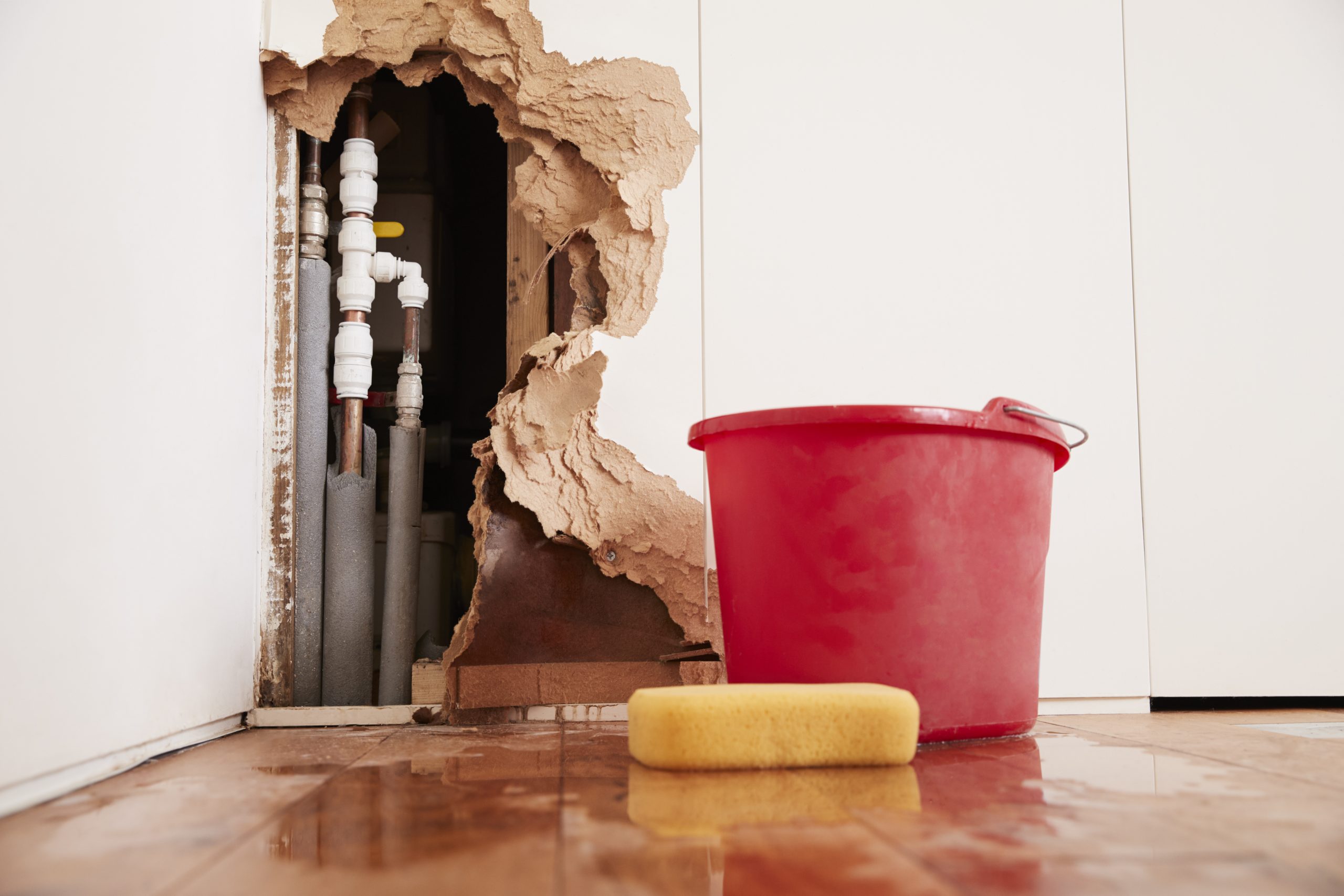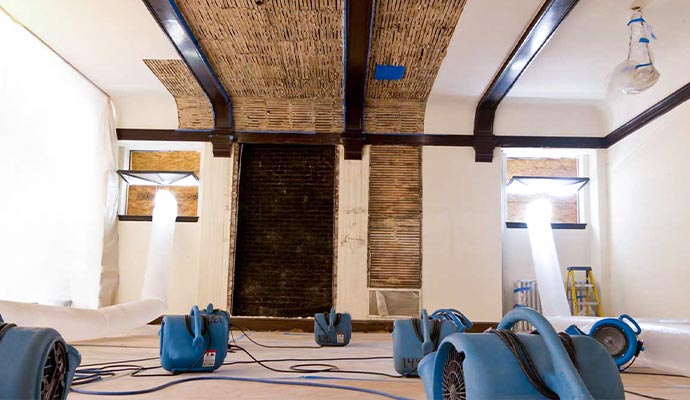Your Trusted Home Inspector Philadelphia: Insights for Confident Residential Property Ownership
Your Trusted Home Inspector Philadelphia: Insights for Confident Residential Property Ownership
Blog Article
Emergency Situation Water Damages Repair: Swift Feedback to Minimize More Damage
Water damage can strike unexpectedly and leave damaging impacts on homes and organizations. When confronted with such a scenario, a quick action is essential to reduce additional damage and avoid potential wellness risks. What exactly does emergency situation water damage reconstruction involve? In this discussion, we will explore the significance of instant activity, the evaluation procedure, the steps involved in water removal and drying out, mold and mildew avoidance and removal, and inevitably, the repair of the affected location. By recognizing the seriousness and extensive nature of this procedure, you will gain important insights into how specialists tackle emergency water damages, guaranteeing a swift and efficient feedback.
Significance of Swift Action
Swift reaction is of utmost significance in water damages reconstruction to minimize more damage and reduce potential dangers. When water damage takes place, whether as a result of a ruptured pipeline, a natural catastrophe, or any type of various other unanticipated occasion, time is important. The longer water rests in a structure, the more damages it can trigger. This is why it is essential to act rapidly and efficiently to remove the water and begin the restoration procedure.
One of the major factors speedy feedback is vital in water damage reconstruction is to prevent the development of mold and mildew and mildew. Mold not only causes more damages to the structure of the structure yet additionally positions health and wellness threats to owners.
Water damage can be ravaging, particularly when it affects personal items of financial or sentimental worth. Performing swiftly allows professionals to assess the damages and implement appropriate repair strategies to recover as much as possible.
Analyzing the Level of Damages

During the analysis, restoration professionals completely check out the affected location to determine visible indicators of damage, such as water stains, warped materials, and mold growth. They additionally use customized devices to discover surprise damage, such as moisture meters and thermal imaging cameras. This extensive assessment permits them to properly identify the level of the damage and establish a customized remediation strategy.
Because it assists professionals prioritize their initiatives,Examining the extent of water damages is crucial. They can recognize areas that require prompt attention, such as standing water elimination and drying, to stop further damage and lessen the threat of mold and mildew development. They can likewise determine the locations that require repair work or substitute, making certain that no damage goes undetected or unattended.

Water Removal and Drying Out Process
The water removal and drying process is an important step in water damage restoration, as it involves the removal of excess water and the extensive drying out of the affected location to avoid additional damages and minimize the risk of mold growth. After evaluating the extent of the water damages, the next step is to extract the water from the damaged location. This is typically done making use of customized equipment such as pumps, vacuum cleaners, and dehumidifiers. These devices are created to successfully and efficiently get rid of water from numerous surface areas, consisting of floorings, wall surfaces, and rugs.
Once the excess water has actually been extracted, the drying out process begins. This action is essential in avoiding second damages, such as structural damage and the development of mold and mildew. High-powered followers and dehumidifiers are utilized to flow air and remove dampness from the air and surface areas. The drying process click here for more might take several days, depending on the degree of the water damage and the materials included.
It is necessary to guarantee that the damaged location is totally dry before waging any type of repair work or reconstruction. Failing to completely dry out the area can bring about long-term concerns, including damaged frameworks, stuffy odors, and the growth of mold and mildew. Professional water damage reconstruction business utilize wetness detection tools to guarantee that the affected location is completely dry before proceeding to the next step.
Mold Prevention and Removal
Reliable mold and mildew prevention and removal are crucial in water damage remediation to guarantee the safety and stability of the afflicted location. water damage restoration philadelphia. When water damage takes place, whether from a ruptured pipe, flooding, or a leaking roofing, it develops an optimal setting for mold development. Mold can start to establish within 24 to 2 days after water damages, and if left neglected, it can spread quickly and create serious wellness threats
To stop mold development, it is crucial to resolve water damages without delay. The very first action is to repair the source and recognize of the water invasion.
In instances where mold growth has currently happened, removal is required to remove the mold and stop its return. This involves the careful elimination and disposal of afflicted materials, such as drywall or carpet, to make certain that all traces of mold and mildew are eradicated. It is very important to note that mold removal ought to be executed by specialists that have the necessary training and equipment to safely manage and eliminate mold.
Bring Back the Affected Location

First of all, it is necessary to thoroughly dry out the location to stop any type of more damages and to inhibit the development of mold recommended you read and mildew and mold. This might involve making use of specialized drying out equipment, such as dehumidifiers and industrial-grade followers, to remove all dampness from the damaged surface areas.
When the location is completely dry, the restoration procedure can begin. This may include repairing or changing harmed architectural aspects, such as drywall, flooring, or ceiling ceramic tiles. It is essential to resolve any type of underlying issues that may have triggered the water damage, such as leaking pipes or malfunctioning plumbing, to protect against future occurrences.
Additionally, bring back the afflicted area may likewise consist of painting wall surfaces, changing damaged fixtures, and completely cleaning and sterilizing the space. This makes certain that not only is the area structurally sound, however it is likewise aesthetically pleasing and secure for occupancy.
Conclusion
Assessing the level of damages allows for effective water extraction and drying procedures to be executed. On the whole, prompt action and extensive restoration procedures are crucial to alleviating the adverse impacts of water damage.
Swift action is of utmost value in water damage restoration to lessen additional damages and mitigate prospective dangers.Throughout the analysis, repair experts completely check out the damaged location to determine visible signs of damage, such as water discolorations, distorted materials, and mold growth.The water removal and drying out procedure is an important step in water damages restoration, as it includes the elimination of excess water and the thorough drying of the affected location to prevent more damage and mitigate the threat of mold growth. After assessing the extent of the water damages, the next action is to draw out the water from the damaged area.Reliable mold avoidance and removal are critical in water damage reconstruction to guarantee the safety and security and pop over to these guys honesty of the afflicted area.
Report this page